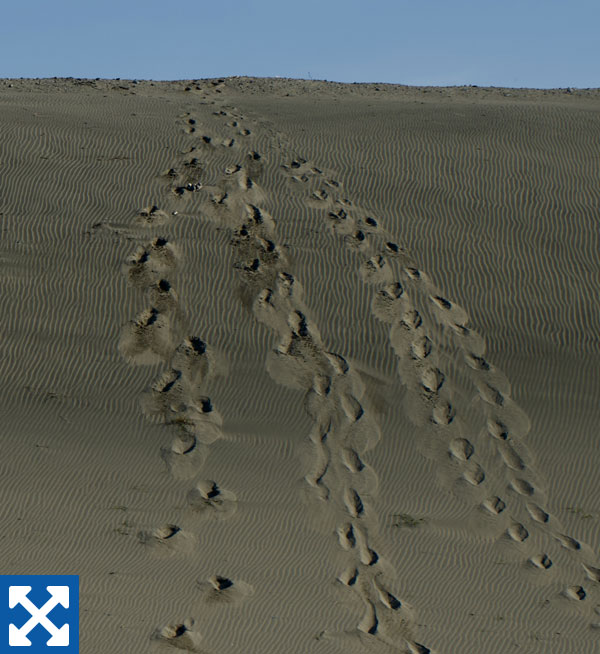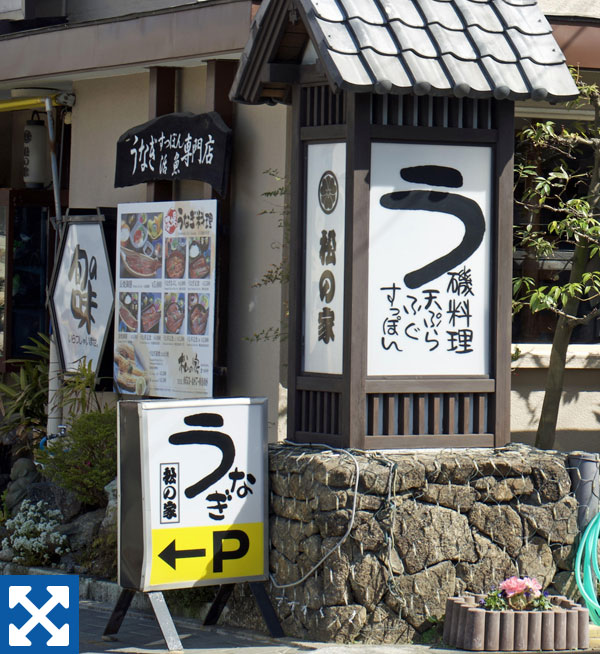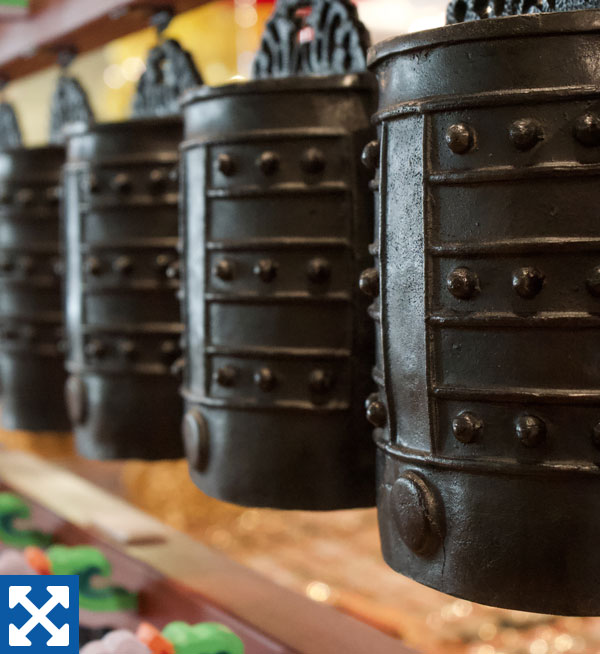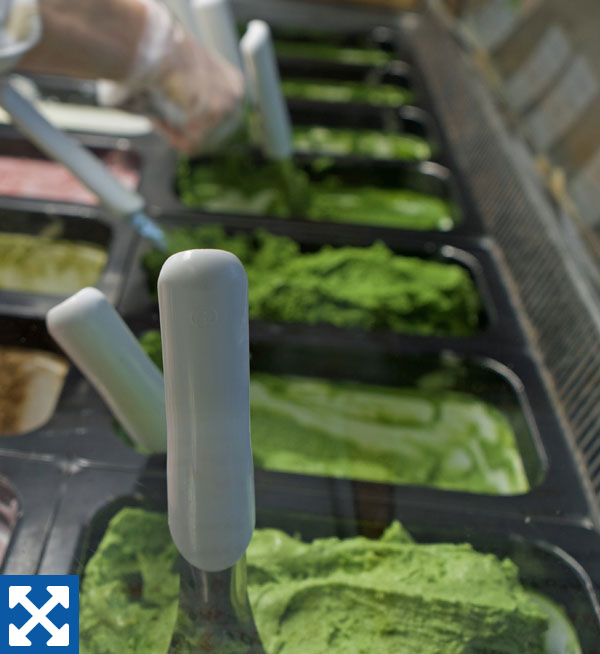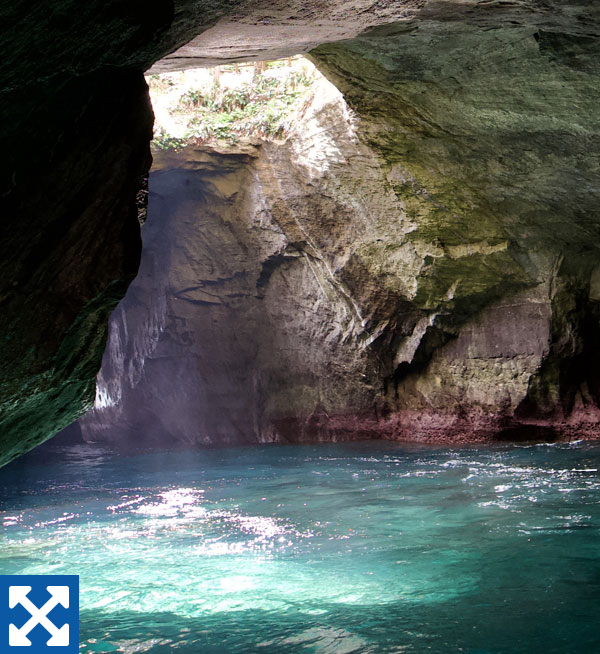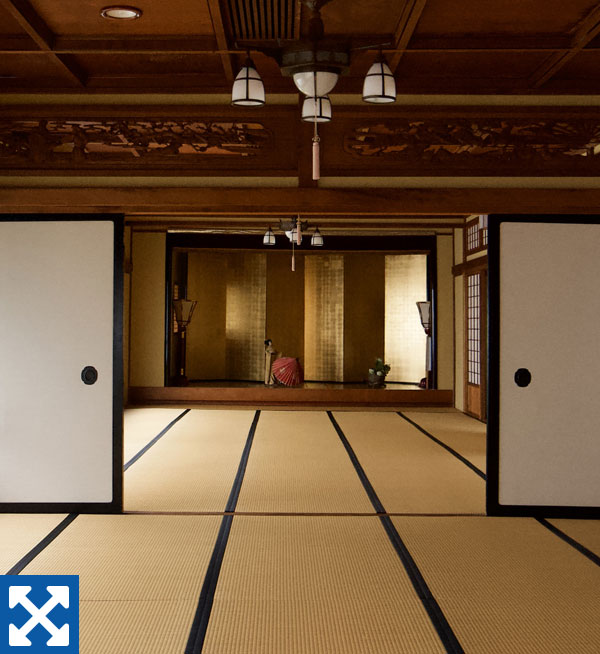Counting down to the Rugby World Cup 2019 … in Japan!
LIFE
A weekend
in Shizuoka
More than the sum of its tea fieldsMount Fuji rises above Shizuoka tea farms. GETTY IMAGES
Shizuoka is filled with rural gems secreted among the mountains
OSCAR BOYD
Staff writer
Little-known outside Japan, Shizuoka Prefecture hugs the coast to the south of Mount Fuji. Home to the Tokyo getaway of Izu, the prefecture is known as the starting point for three of the main hiking trails up Fuji, which forms the greater part of Shizuoka’s northeastern boundary line, and for the volume of its tea production — some 40 percent of Japan’s green tea is grown here.
Though its attractions are spread far and wide, Shizuoka is full of undiscovered gems secreted away among the foothills of Fuji and the Minami Alps. The prefecture is best explored by car, as public transport outside of the larger cities and towns is limited. Our jumping off point is the city of Hamamatsu, in the far west of the prefecture.
Friday
Not quite the Namib — early morning
The Nakatajima Sand Dunes on Hamamatsu’s south coast might be more appropriately named the Nakatajima Sand Dune (Nakatajimacho 1313, Minami-ku, Hamamatsu) — it really is just one dune, and then a few hillocks of sand and scrub.
Still, it’s worth a visit for being one of Japan’s three largest dunes (the country doesn’t have many), and to spend an hour or so at the beach. Just across the road from the dune is Fix Surf Shop (Nakatajimacho 1669-1, Minami-ku, Hamamatsu), where you can rent boards if the surf is riding high.
A general’s stronghold — late morning
The main keep of Hamamatsu Castle (Motoshirocho 100-2, Naka-ku, Hamamatsu; ¥200 entry to the keep) is still standing — albeit a reconstruction, since the original was destroyed in air raids in World War II. That being said, any kind of keep is somewhat of a rarity in Japan after the Meiji government came to power in 1868 and decreed that the nation’s castles should be torn down.
The castle is notable for being the home castle of Tokugawa Ieyasu, the 17th-century general who played a great part in forging a unified Japan. Panoramic views of Hamamatsu are to be had from the viewing deck on the top floor of the keep, which is also home to a collection of samurai armor, old rifles and other pre-Meiji Era (1868-1912) weaponry.
Lake-side relaxation — afternoon
Lake Hamana sits at the western edge of Hamamatsu and is used to cultivate unagi (eel), nori seaweed and Chinese soft-shelled turtles. Around its edge runs a cycling course and multiple shops from which you can rent bicycles.
Start at Kanzanji Onsen, a cluster of onsen bath houses, hotels and the small Kanzanji temple (Kanzanjicho 2231, Nishi-ku, Hamamatsu). There are a number of unagi restaurants in the town serving eel fresh from the lake; look out for the hiragana “う” character and take your pick.
A taste of Brazil — evening
One of the highest concentrations of Portuguese speakers in Japan is located in Hamamatsu, which has a large population of Brazilians and Nikkei (Brazilians of Japanese descent). The city is home to multiple establishments catering to this population, including Brazilian hairdressers, botox salons, travel agents and, of course, restaurants.
Head to Servitu (Sunayamacho 323-5, Naka-ku, Hamamatsu) — an import store and buffet-diner — for churrasco (grilled meat) and an all-you-can-eat course, or Gordinhus (Sumiyoshi 2-1-15, Naka-ku, Hamamatsu), another family-run barbeque joint. Both places are better at dinner, with a wider and fresher menu. Servitu doesn’t run its grill unless you are in a group of five or more and call a day ahead to reserve.
For late morning acai bowls the next day, pop into Acai Ya (Kajimachi 2-9, Naka-ku, Hamamatsu), a Brazilian acai smoothie/bowl shop founded in the city. It’s not Brazilian, but across the road from Acai Ya, Petit Ami Cafe (Kajimachi 1-60, Naka-ku, Hamamatsu) serves good coffee and great crepes.
A rare sight: Though reconstructed after it was destroyed in World War II, Hamamatsu is one of the few castles in Japan that still retains its keep. OSCAR BOYD
Saturday
For the music lovers — morning
Before leaving Hamamatsu, pay a visit to the Hamamatsu Museum of Musical Instruments (Chuo 3-9-1, Naka-ku, Hamamatsu; ¥800). The museum, founded in 1981, has a collection derived from every inhabited continent.
Unfortunately, only two instruments in the main exhibition can actually be played, a sō (a traditional Japanese string instrument) and a reed organ, but nearly every exhibit has two pairs of headphones next to it so that you can hear the instruments being played. There’s also a hands-on room with a few more instruments that can be played, including a huge, cannon-shaped Thai goblet drum.
Rugby and religion — late morning
A 20-minute drive from Shizuoka Stadium Ecopa (Aino 2300-1, Fukuroi) is Hattasan Soneiji (Toyosawa 2777, Fukuroi), a Buddhist temple dedicated to Sho Kannon, a goddess of mercy.
The temple was founded in 725 and the complex is huge, beginning with a parade of shops and continuing to a grand, tree-lined avenue running beneath torii gates, before a long series of steps to the main temple at the top. The main structure is currently undergoing maintenance, which is expected to be completed in June 2019. On your way into or out of the temple, pick up an artisan coffee at Monzen Cafe (coffee from ¥350).
A picture-perfect tea shop — lunch
Opened in 1596, Chojiya (Mariko 7-10-10, Suruga-ku, Shizuoka) is one of the oldest restaurants in Japan, starting off as a humble teahouse along the Tokaido highway that connected Tokyo to Kyoto during the Edo Period (1603-1868).
Celebrated ukiyo-e painter Utagawa Hiroshige painted a picture of the teahouse on his travels along the road, and Chojiya has a number of his prints on display at the back of the restaurant. At the heart of the menu is tororojiru, a dish of grated yam served with your choice of rice or noodles.
Matcha do about gelato — afternoon
Nanaya (Ryogaecho 2-3-1, Aoi-ku, Shizuoka) serves seven flavors of green tea gelato all made from Shizuoka-grown tea. The flavors range from No. 1, which has a mild, pleasing green tea flavor, to No. 7, which tastes like unfiltered swamp water. Frustratingly, the shop doesn’t allow tastings before you decide on the strength; commit to the No. 7 at your own risk.
Tea farm tours — afternoon
The Tea Bridge offers English-language tours around two Shizuoka-based tea farms, the Houkouen tea fields and the Seranti Tea Farm. These tours, which are three or seven hours depending on the itinerary, include lessons on tea production, walks around the tea fields and, depending on the season, a visit to a tea processing factory. (You can watch a special Japan Times presentation on The Tea Bridge here.)
Dining room with a view — dinner
Nestled in the foothills of Mount Fuji, Bio-S (Oshikakubo 939-1, Fujinomiya; dinner from around ¥10,000) is a superb French kaiseki (multicourse) restaurant run by Kazuhiro Matsuki. Having lived in Paris, Matsuki speaks French, Japanese and English, and he and his team serve an inventive menu with excellent wine pairings (alcohol and nonalcohol options available) chosen by Matsuki. The restaurant is beautifully designed and situated, and at lunch has picturesque views toward Fuji.
Celebrated patronage: Ukiyo-e painter Utagawa Hiroshige painted a picture of Chojiya during his travels along the Tokaido highway. Opened in 1596, it is one of Japan's oldest surviving restaurants. OSCAR BOYD
From mild to swampy: Nanaya serves seven strengths of green tea gelato. Attempt the No. 7 at your peril. OSCAR BOYD
Sublime, inside and out: The exterior of French kaiseki restaurant Bio-S, lit up for its evening sitting. OSCAR BOYD
Sunday
Preserving the bizarre — late morning
The Izu Peninsula has long been the go-to holiday resort for Tokyoites, though much of it seems to be in decline as the tourist yen moves elsewhere.
That said, many attractions are still hanging on. Worth visiting are the museums to the south of Ito, near the Jogasaki coast. These include the Nosaka Automata Museum (Kabujiri 1283-75; Yawatano, Ito; ¥1,000), with its collection of performing automata figurines; Ayashii Shonen Shojo Hakubutsukan (Futo 1029-64, Ito; ¥1,000), filled with a collection of mannequins living their best Showa Era (1926-89) lives, taxidermy and a creepy haunted house near the bathroom; and the Izu Teddy Bear Museum (Yawatano 1064-2, Ito; ¥1,080).
Caves, bluffs and stacks — late morning
Skip the Kadowaki lighthouse on the east coast of the Izu Peninsula and instead head west to the Dogashima coast. Board a Dogashima Cave Excursion (Nishina 2060, Nishiizu, Kamo; from ¥1,200) boat from the pier to the north of Dogashima to see the coastline’s caves, bluffs and stacks; Japan’s miniaturized version of Vietnam’s Halong Bay. Tours take roughly 20 minutes.
Last sights — late morning
The drive north from the Dogashima coast to Tokyo is stunning, hugging a rocky coastline with fantastic views toward Mount Fuji. There are viewpoints alongside the road to see the mountain, rising high above Suruga Bay.
Stop at Ichigo Plaza (Minamiema 1788-2, Izunokuni), a roadside shop that serves ichigo daifuku (strawberry-filled mochi cakes) and other strawberry-inspired snacks. In season, the strawberries are almost fist-sized, and the mochi wrapping is covered in a dusting of icing sugar.
This is the eighth installment of “A weekend in…”, a monthly series introducing each of the 12 host cities of the 2019 Rugby World Cup.
To read more weekend guides to the host cities of the Rugby World Cup 2019, visit features.japantimes.co.

